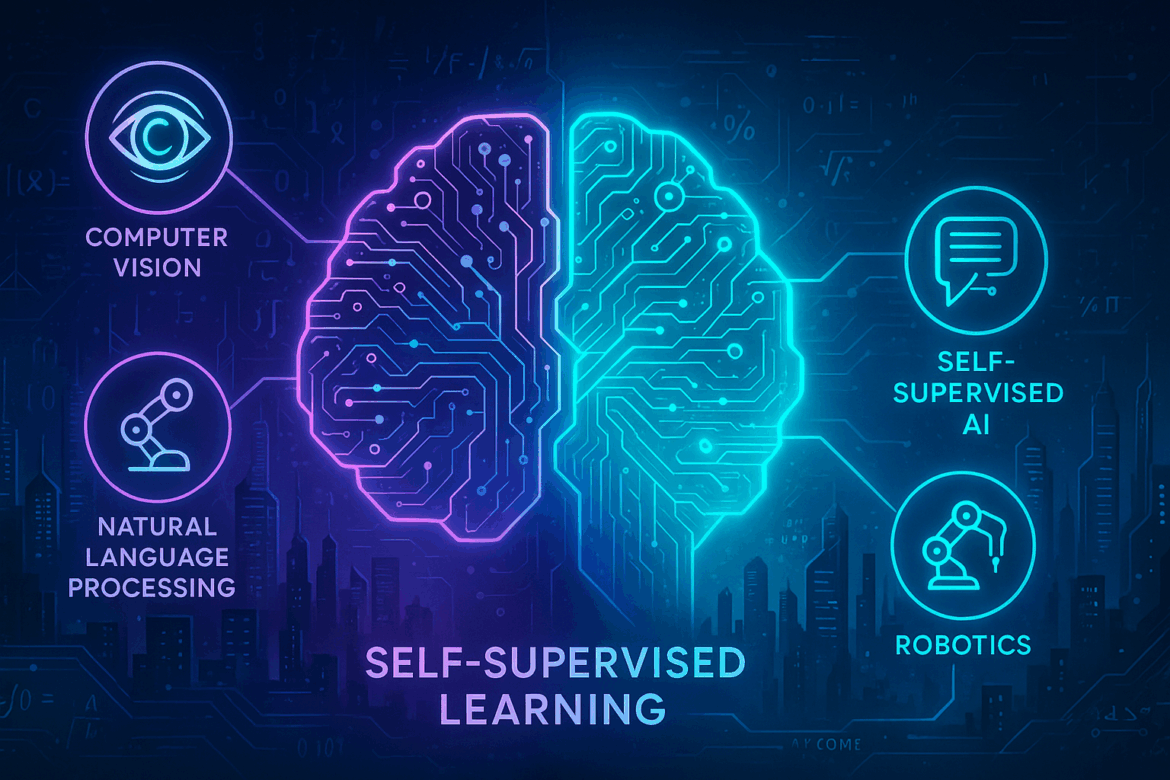Artificial Intelligence (AI) has made big strides—thanks to new training methods that help machines learn more like people. Self-Supervised Learning (SSL) stands out as one of the most exciting breakthroughs in this field.
Unlike traditional machine learning, which relies on labeled data, self-supervised learning trains AI models using raw, unlabeled data—making it more productive, adaptable, and clever.
In this blog, we’ll explain what SSL is how it functions, and why it’s causing a revolution in the world of AI.
🧠 What Is Self-Supervised Learning?
Self-Supervised Learning is a machine learning approach where the model gains knowledge from the data on its own, without requiring examples labeled by humans.
Picture this: much like a kid figures out objects by seeing them in various situations, a self-supervised model learns data patterns and connections by tackling pretext tasks—small puzzles created from the data itself.
Here are some examples:
- Can the model predict the next word when given half a sentence?
- Is it able to complete missing sections of an image?
- Can it sync audio with a video clip?
These “mini-challenges” help the model grasp language, vision, or sound all without manual tagging.
📊 Why Traditional AI Needed a Shift
Traditional supervised learning depends on massive datasets with human-created labels. This approach has several drawbacks:
- It takes a lot of time
- It costs a lot of money
- It has limitations (it can’t include everything)
Also labeled data isn’t always easy to get—in areas like medicine, audio, or video. This is where self-supervised learning steps in. It gives us the chance to learn from any kind of data much like humans do.
🔍 How Self-Supervised Learning Operates
Here’s a basic 3-step look at how SSL works:
1. Build a Pretext Task
The system makes up a problem using the data itself. For example: It might take out a word from a sentence and ask the model to guess it.
2. Train the Model
The model tackles these tasks and gains knowledge of deep patterns in the data (language structure, image features, etc.)
3. Fine-Tune to Solve a Real Task
After the model has built up general knowledge, you can adapt it to handle a specific job—such as translation, image recognition, or voice commands.
🌍 How SSL Works in the Real World
Self-supervised learning is the force behind many AI breakthroughs:
🔤 Language Models
Tools like ChatGPT, BERT, and GPT-4 rely on SSL—they learn from billions of sentences without labels.
🖼️ Image & Video Understanding
Techniques like SimCLR and DINO have an influence on SSL to spot patterns in images and videos, which powers visual search and robotics.
🩺 Healthcare
AI can examine X-rays or medical reports without doctors having to label every case.
🎧 Speech & Audio
SSL helps to create voice assistants that grasp human speech better across accents and noisy settings.
🚀 Benefits of Self-Supervised Learning
- Reduced need for labeled data
- Improved generalization across tasks
- More flexible AI models
- Reduced costs and quicker deployment
It’s helping companies build smarter tools using fewer resources and on a large scale.
🔮 The Future of SSL in AI
Self-supervised learning sits at the heart of foundation models—massive adaptable models that we can tweak for various tasks. It’s pushing us toward a future where AI becomes more:
- Adaptable
- Similar to humans in how it learns
- Able to grasp complex multimodal inputs (text + image + sound)
We can bet on SSL to have a greater impact on robotics, climate modeling, self-driving cars, and even tools for creativity.
